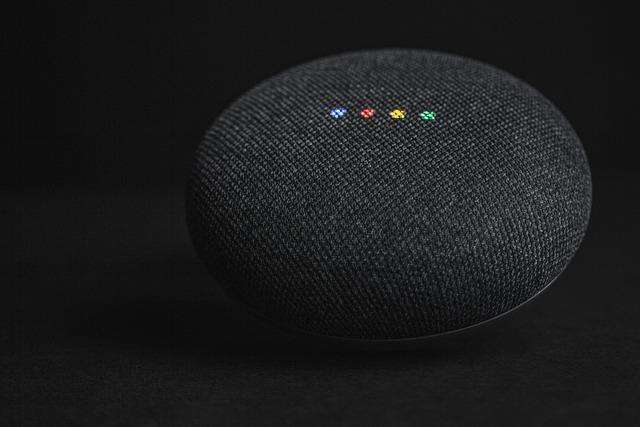In an era where our homes are becoming smarter and more interconnected, choosing the right smart hub can feel like navigating a technological maze. As we step into 2025, two titans dominate the landscape: Google Nest and Amazon Echo. Each offers a unique blend of features, compatibility, and user experience, making the decision not just a matter of brand loyalty, but a quest for the ultimate home automation companion. In this article, we’ll delve into the strengths and weaknesses of these smart hubs, examining their versatility, performance, and how they integrate with the ever-evolving ecosystem of smart devices. Whether you’re a tech enthusiast or a casual user looking to enhance your living space, join us as we explore which of these digital allies truly deserves the title of the best smart hub for 2025.
Exploring the Ecosystem: Google Nest and Amazon Echo Integration
As smart home technology continues to evolve, the integration between different platforms becomes increasingly important for consumers seeking a seamless experience. The synergy between Google Nest and Amazon Echo offers compelling possibilities for home automation. With Google Assistant’s real-time information retrieval capabilities and Alexa’s expansive range of compatible devices, users can leverage the strengths of both ecosystems to create a highly functional smart home environment. This interoperability is particularly beneficial for multitasking; for instance, a user can ask Google to dim the lights through their Nest devices even while an Amazon Echo facilitates music playback.
The diverse compatibility of devices in both ecosystems enhances user experience. Consider the following advantages:
- Device Versatility: Both platforms support various third-party smart devices, allowing users to customize their homes.
- Automated Routines: Users can set routines that trigger actions across devices from both ecosystems, promoting effortless living.
- Voice Command Flexibility: Communicating seamlessly with either system allows for a more natural home environment.
This integration invites users to link devices creatively, maximizing the potential of their smart home configurations. Understanding how these two giants work together will empower consumers to make informed choices in an increasingly interconnected age.

Voice Assistant Versatility: How Each Hub Handles Commands
When evaluating the versatility of voice assistants, both Google Nest and Amazon Echo have carved out their unique identities while delivering robust command handling. Google Nest, powered by Google Assistant, excels in its conversational abilities, making interactions feel more natural. Users can make complex queries or follow multi-step instructions, like “Turn on the lights and play my evening playlist,” all while Google Assistant understands context effectively. This capability extends to integration with various applications, allowing for tasks ranging from setting reminders to controlling smart home devices seamlessly.
On the other hand, Amazon Echo, featuring Alexa, is renowned for its extensive skill set and third-party integrations. Alexa can interact with a vast number of smart devices, providing users with the flexibility to control their environment. For example, users can say, “Alexa, dim the living room lights and give me the news,” showcasing its ability to juggle multiple commands while maintaining functionality. Moreover, Alexa’s ability to learn and adapt through user interactions contributes significantly to its versatility, making it a go-to for those who prioritize customizability in their smart home setup.

Smart Home Compatibility: Which Hub Supports More Devices
When considering a smart home hub, compatibility with a multitude of devices is one of the crucial factors. Both Google Nest and Amazon Echo have made significant strides in this area, but there are key differences that may influence your choice. The Google Nest ecosystem tends to favor Google services and devices, while also integrating seamlessly with an array of third-party gadgets. Google Nest supports over 40,000 smart devices from various brands, including major players like Philips Hue, Arlo, and Wyze. In contrast, the Amazon Echo boasts compatibility with more than 100,000 devices, spanning a wider range of manufacturers. This extensive compatibility can be a game-changer for users seeking to customize their home automation experience.
Furthermore, both platforms offer user-friendly integrations with popular smart home standards, but Amazon’s Alexa seems to pull ahead with its support for multiple protocols such as Zigbee, Z-Wave, and Wi-Fi. This allows your Echo device to control a larger number of smart devices without needing additional hubs. The following table summarizes the device compatibility of both hubs:
| Smart Hub | Device Compatibility | Supported Protocols |
|---|---|---|
| Google Nest | 40,000+ | Wi-Fi, Bluetooth |
| Amazon Echo | 100,000+ | Wi-Fi, Bluetooth, Zigbee, Z-Wave |

User Experience and Interface: A Comparative Look at Usability
When evaluating the usability of the Google Nest and Amazon Echo, it’s essential to consider the design of each interface and how intuitive they are for users. The Google Nest offers a sleek, minimalistic touch screen that allows for effortless navigation through the device’s functions. Users can easily access settings, manage connected devices, and even view visual content such as calendars and photos. In contrast, the Amazon Echo, particularly its Echo Show variant, features a vibrant display and a user-friendly interface that integrates with Alexa’s voice commands. While both interfaces prioritize ease of use, the choice often boils down to personal preference and whether users favor tactile interaction or voice-driven commands.
In terms of device setup and everyday use, users have highlighted several key factors that enhance their experience. Both platforms facilitate seamless integration with numerous smart home devices, but the Amazon Echo shines with its expansive compatibility and skill set. On the other hand, Google’s strengths lie in its robust integration with Google services, making it particularly attractive for users already embedded in the Google ecosystem. Consider the following aspects:
| Feature | Google Nest | Amazon Echo |
|---|---|---|
| Interface Type | Touch Screen | Voice and Touch Screen |
| Smart Home Compatibility | Strong, but limited | Extensive |
| Strength | Google Services Integration | Voice Recognition and Skills |
In Summary
As we step into 2025, the debate between Google Nest and Amazon Echo as the ultimate smart hub continues to evolve, reflecting not just technological advancements but also how we choose to interact with our living spaces. Each platform offers unique strengths, catering to different preferences and lifestyles. Whether you’re swayed by Google’s sophisticated AI and seamless integration with Google services or Amazon’s vast ecosystem of Alexa skills and device compatibility, it’s clear that the best choice ultimately lies in your individual needs.
As smart home technology advances, it becomes increasingly essential to weigh the options carefully. Consider how each hub aligns with your daily routines, privacy concerns, and the devices you already own. The future is bright for smart home innovation, and whichever path you choose, embracing the capabilities of either Google Nest or Amazon Echo will undoubtedly enhance your home experience.
In the end, the smart hub that suits you best is the one that harmoniously integrates into your life, making everyday tasks simpler and more enjoyable. As you look ahead, may your home be as smart and intuitive as you envision it, filled with newfound ease and comfort. Happy smart living!














Leave feedback about this